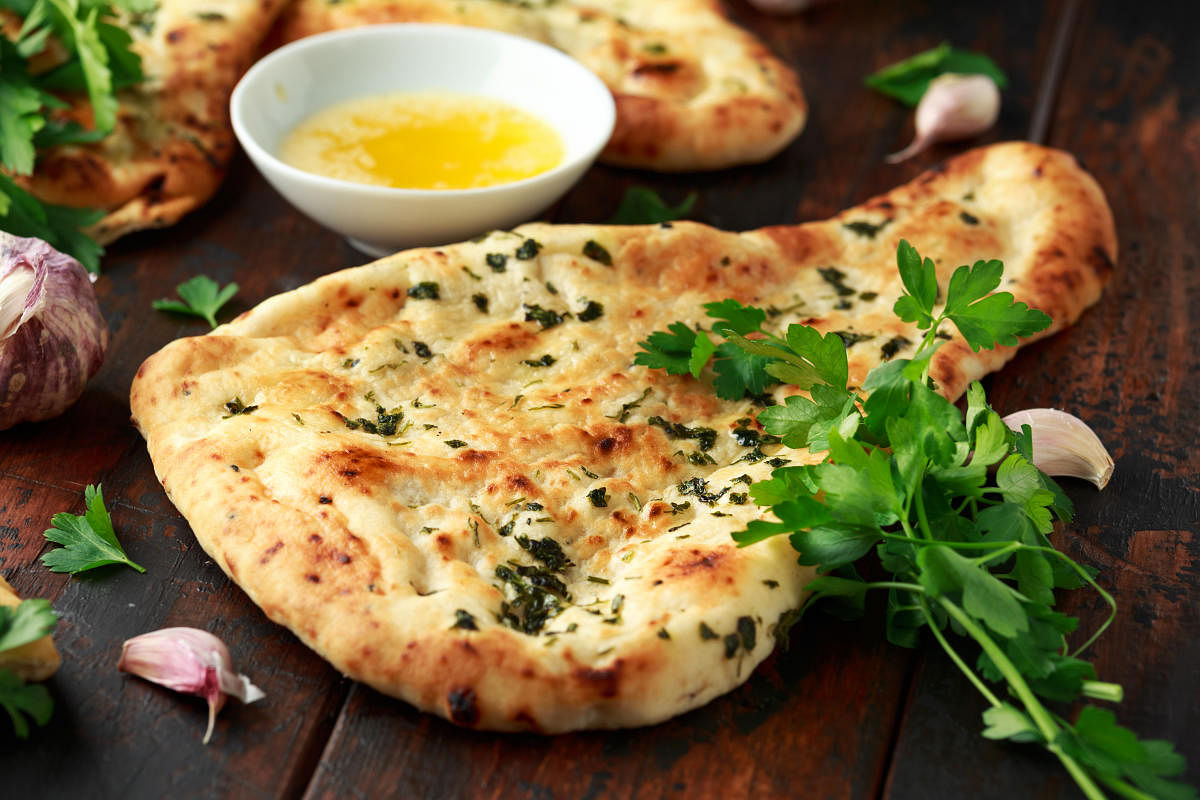
Speaking of bread, nothing beats the thrill of having a hot chapati, tandoori roti or naan when it’s still hot off the tawa or tandoor. The smell of fresh bread near a bakery is also tempting but the flatbreads that we Indians and people in many Asian countries consume is unmatchable.
Just think of this. You are sitting with your family or friends on a winter evening at an open-air restaurant and the tandoor is blazing away. The chef is dishing out tandoori rotis and naan by the dozens. As each one is taken out of the tandoor, the chef reaches out for the basting brush, dips it in molten butter and slaps it generously on the bread. This is brought straight to those hungry souls with all the butter dripping away. Can any leavened bread beat this? Definitely not, as the thrill and proof of flatbreads like roti or naan is in the eating!
Contrary to what we normally think, roti or naan can be made at home and that too without a tandoor. The only thing that will be missing is the smoky flavour of the coal-fired tandoor. For instance, to make naan, maida or refined flour has to be mixed with curd and a bit of baking powder to knead it well into a dough. Let the dough rest for an hour or so. Roll out the dough, apply a bit of water to one side and stick that side on the tawa. Once bubbles appear, turn the tawa and roast the top side of the dough. As water has been applied to the bottom, the dough will not fall. Once the top has browned a bit, it is ready to eat, after applying butter of course.
All the way from South Asia like the Naan-e-Afghani in Afghanistan, to the Lavash in countries like Iran and Turkey, flatbreads are an important part of the daily diet of people. So much so that even the Americans, Brits and some Europeans are taking to what they erroneously call ‘naan bread’. Even though toasted bread was seen as something that is eaten when one has a fever, pav became a hot favourite among Indians. It is a well-known fact that pav is not even Indian. It was introduced by the Portuguese colonisers in Goa. Pav bhaji was a convenient food for mill workers in Mumbai, but it is now one of India’s favourite dishes. The versatility of the pav adds to the flavour of vada pav, dabeli and misal pav all of which any Maharashtrian will swear by.
Coming back to the original point, tastes have changed and people are exploring different cuisines. After all, who can resist a roti dripping with butter?
(The author takes refuge in food after a tiring day with cars and gadgets.)